Why does my Sharp LCD TV sometimes make a cracking sound?
- LLisa HowardSep 14, 2025
The cracking sound your Sharp LCD TV sometimes makes is not a malfunction.

Why does my Sharp LCD TV sometimes make a cracking sound?
The cracking sound your Sharp LCD TV sometimes makes is not a malfunction.
How to troubleshoot no sound on Sharp LC-60LE655U?
If there is no sound on your Sharp LCD TV, verify that the connection to other components is correct. Make sure the volume isn't too low and that you haven't pressed MUTE on the remote. Check the audio output of any connected external equipment to ensure the volume is not too low or muted. When external equipment is connected via an HDMI cable, you may need to configure the audio to be output through the HDMI cable. When audio is not output from external equipment connected to the PC IN or HDMI IN 2 terminal, check the "Audio Select" setting. Even when external equipment is connected using an HDMI-certified cable, an audio cable connection may be required depending on the type of equipment and the media being played back. When connecting a PC via an HDMI-certified cable, check if the audio...
| Screen Size | 60 inches |
|---|---|
| Resolution | 1920 x 1080 |
| Display Type | LCD |
| Backlight Type | LED |
| Refresh Rate | 120 Hz |
| HDMI Ports | 4 |
| USB Ports | 2 |
| Smart TV | Yes |
| Connectivity | Wi-Fi, Ethernet |
| Dimensions (W x H x D) | 53.9 x 32.3 x 3.9 inches |
| Audio Output | 20W (10W x 2) |
Statement of compliance with FCC rules and regulations.
Statements regarding FCC rules, wireless radio, and Industry Canada.
Numbered instructions for safe operation, handling, and placement.
Guidance on grounding, wiring, and electrical safety standards.
Advice on ventilation, moisture, heat, and product placement for safety.
Instructions for caring for cabinets, front panels, and safe transport.
Guidance on safe TV placement to prevent tipping and child injuries.
Recommendations for safe TV wall or ceiling mounting procedures.
Advice on safely relocating older CRT televisions within the home.
Precautions for safe use, storage, and maintenance of 3D glasses.
Lists supplied and optional accessories for the television.
Step-by-step instructions for attaching the TV stand.
Instructions for stand attachment, including work table setup for 90/80 inch models.
Visual guide for attaching stands to various SHARP TV models.
Essential steps for initial TV setup, including antenna and power connections.
Steps for installing batteries, using the remote, and connecting antennas.
Identification of front, side, and rear parts of the television.
Identification of buttons and features on the remote control.
Detailed explanation of each button's function on the remote control.
How to connect video sources (PC, DVD) and audio equipment to the TV.
Guide for connecting players, set-top boxes, VCRs, and game consoles.
Instructions for connecting surround systems, audio systems, and PCs.
Steps for turning the TV on/off and performing the initial installation process.
Procedures for searching channels and configuring network connections.
Explains common remote control operations like changing channels, volume, and input.
Details on using NETFLIX, AUDIO settings, Sleep Timer, and AV MODE.
How to use closed captions and adjust screen view modes.
Options for adjusting screen size for various media types and PC input.
How to use the menu screen and control buttons.
Overview of main menu sections like Picture, Audio, System, Setup, and Information.
Detailed settings for picture quality, including OPC, CMS, and motion enhancement.
Fine-tuning picture quality and audio settings like surround sound and bass enhancement.
Managing power saving, system options, and terminal settings.
Configuring input labels, individual settings, and parental controls (V-Chip).
Steps for initial setup, channel search, network configuration, and favorite channels.
Setting up Bluetooth, updating software, and managing keyboard/mouse.
Procedures for updating TV software using a network connection.
Guidelines for setting up and safely viewing 3D content.
How to display 2D/3D images and handle 3D signal detection.
Adjusting 3D settings like brightness, depth, auto change, and viewing time.
Guidelines for proper use, caution, and handling of 3D glasses.
How to connect USB memory devices and hard drives for media playback.
Steps to connect a home network server for media playback.
Lists supported file formats for USB devices and Home Network servers.
Procedures for viewing photos, music, and videos from USB or network sources.
Using controls for music playback and video playback functions.
Configuring slide shows, BGM, and displaying photos in 3D.
Programming the remote to control other AV devices.
Controlling AV devices and using AQUOS LINK for HDMI equipment.
Configuring AQUOS LINK, selecting recorders, and setting up audio return channels.
Using operation panels, recording, audio, and connecting smartphones.
Connecting smartphones for media viewing and remote control.
Steps to adjust PC image position and sync for optimal display.
Configuring audio input for PC connections via analog or HDMI.
Setting up remote control via IP or RS-232C for PC connectivity.
Reference for PC commands and resolution/frequency compatibility.
Steps for connecting the TV to the internet using wired or wireless networks.
Detailed setup for network, IP, and interactive services.
Using the software keyboard and accessing AQUOS Advantage Live.
How to navigate websites, use the toolbar, and manage browser settings.
Configuring browser settings, using keyboard/mouse, and managing internet applications.
Legal disclaimers and examples of supported internet applications.
Step-by-step instructions for safely detaching the television stand.
Guide for securely mounting the TV on a wall using a bracket.
Technical details and dimensions for compatible wall mount kits.
Solutions for common operational problems, picture, sound, and connectivity issues.
Explains error codes, software licenses, and clearing secret numbers.
Detailed technical specifications for various TV models including dimensions and power.
Comprehensive technical data for different TV models, covering physical and electrical attributes.
Details on wireless LAN and Bluetooth certifications, FCC/IC notices, and safety precautions.
List of registered trademarks for product features and technologies.
Details of the consumer limited warranty, coverage, and exclusions.
Visual diagrams showing the physical dimensions of LE857U series TV models.
Diagrams showing physical dimensions for LE757U, LE755U, LE750U, and C7500U models.
Visual representation of TV dimensions for LE657U, LE655U, LE650U, and C6500U models.


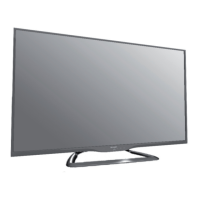

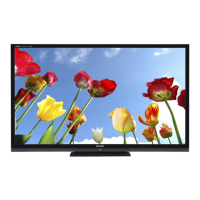

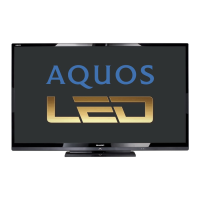

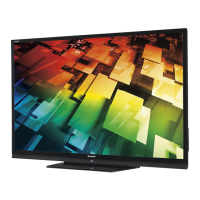
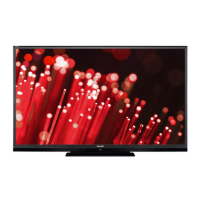
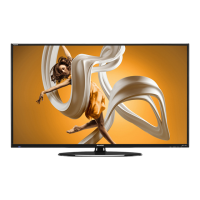
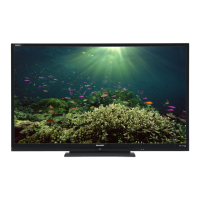
